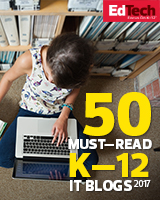Not sure how to face your class after the election? Teaching controversial topics with three simple tools

One way or the other, things will probably get a bit more . . . hmm, interactive in your classrooms over the next few weeks. As final results from today’s election trickle in this week and mail-in ballots are counted, you will most likely have some students who will question the results. Making class discussions difficult and uncomfortable.
But that sort of learning can be difficult. I get that. Throw the pandemic into the mix and I can’t think of a tougher time to be a classroom teacher. And you’re not alone in being concerned about taking on controversial topics.
Education Week survey data gathered back in 2017 suggested that many teachers find it difficult to talk about race, politics, and other controversial topics. Almost 30 percent expressly avoid it completely. Part of the problem is that many of us – 44 percent – don’t feel prepared to lead conversations that will probably get emotional.
So should you even try? And if you do decide to take on that challenge, what’s the best way to deal with those conversations?
Answer to the first question? Absolutely.
I think too often we failed to focus on skills that our kids need to support a vibrant, inclusive, open, accessible, and empathetic democracy. Too often we concentrate on producing great test takers but not on creating citizens that can listen to others, evaluate arguments, use evidence to make claims, and respect differing viewpoints. Citizens who see the value of diversity, of openness to others, of being part of something bigger than themselves. Citizens who can exchange honest, well-reasoned views on controversial topics.
Our country (and world) needs as many open-minded people as possible who are able to work with others, able to see divergent and different viewpoints, and who can develop solutions to urgent problems. And what better place for students to learn these skills? Who else is better at teaching them than us?
During an interview titled Politics in the Classroom. How Much is Too Much? on NPR, Paula McAvoy, author of The Political Classroom and director of the Center for Ethics and Education at the University of Wisconsin-Madison, asks:
How political do we want students to be? That’s really a question that a lot of communities struggle with and a lot of teachers struggle with. And the point of the book is to say that, in general, to be able to talk about politics is a skill that people need to learn.
And it would be great if it were learned in school because these are great moments in which you bring a group of young people together who are forming their political views. They can really learn to engage across their differences and to start to see that political conflict is a normal part of democratic life.
In a separate interview, McAvoy says that “we need more school-based political discussions in a time of national divisiveness, not fewer.”
the main challenge teachers face is finding resources that are current, present multiple and competing points of view, and are the right reading level.
One thing that came out of our research is that students are fascinated by the fact that their peers have different opinions. It opens them up to the idea that the world is complex, that people don’t all think like me, and I still like these people.
And if you haven’t seen this already in your room, kids want to talk about these issues. Generation Z – your kids – want to solve problems. They want to make the world a better place. They’re just not always sure how to do that.
So the simple answer to the first question – yes. We need to find ways to encourage and support controversial and uncomfortable conversations. Because it makes our kids better prepared for the real world.
If you accept the idea that we should be doing this, it would still be nice to have some support and tools. What does it look like? What are others doing that works? Are there resources I can use?
Start by prepping a bit for the conversation:
- Prepare yourself
Before starting any conversation with students, ensure that you are prepared to show up as a facilitator with integrity and poise. You need to understand your own bias before you begin helping kids see theirs. This helps prevent you from being triggered, allowing you to better guide the learning. -
Support student self-care
It’s been a tough year. BLM. Protests. The presidential election. Pandemic. Remote learning. All of this can take a toll. Educate students about importance of self-care practices. - Create a supportive environment and agree on community norms
With everything going on, all of your students want answers, stability, normality. But realize that your students will respond differently to the election’s outcome. Many BIPOC and undocumented kids will have especially strong feelings and concerns. Ensure a supportive classroom with clear and explicit behavior norms. The Choices Program has some helpful suggestions here and here.
Once you laid some foundation, try any or all three of these strategies for tackling controversial topics:
1. Use the Civil Dialogue strategy by a group called Generation Global. They’ve done a lot of work with the Newseum Education people. Start by downloading the incredibly useful PDF. Then develop a clear goal that you communicate to students to help them stay focused and civil.
Civil Dialogue is:
- an encounter with differences
- process for seeking understanding – the goal is not come to 100% agreement
- promotes a non-binary world view. Not right or wrong, not us and them
- Think critically about issues
- engage confidently and genuine curiosity
- understand ourselves and others as complex individual
The strategy encourages best practices (get the details in the PDF download):
- slow down
- say what you see
- say what you hear
- take a break
- reminders about ground rules
- park it
- deal with infractions
- find a bigger question
2. Another effective tool is something called Structured Academic Controversy. It’s a cooperative learning strategy designed to engage small groups of students in the discussion of controversial issues. Through a series of research steps, students add to their understanding of an issue or question. After students have fully explored and analyzed the pro and con arguments on an issue or question, they work as a group to reach a consensus on the issue.
I really like the SAC idea. I used to plan student debates in class. The great thing about a class debate? There’s always a winner. The really crappy thing? There’s always a loser. Exactly the sort of thing we want to avoid if we’re trying to build consensus and teach civic engagement skills. A well run SAC still allows kids to disagree but trains them to respect diverse opinions while using evidence to support their own.
Get details steps to creating your own SAC here. And don’t forget the already created SAC lessons at the Stanford History Education Group.
 3. I haven’t used what’s@stake with kids but it also looks like a really cool digital simulation that supports the understanding of different perspectives. “At times, the barriers between overcoming community divides and biases to solve local problems can feel impenetrable. @Stake was created to help facilitate productive and fair conversations in classrooms, conferences, strategic board meetings, and public events. By playing @Stake, participants learn that productive conversations thrive off of authentic listening and multiple perspectives.”
3. I haven’t used what’s@stake with kids but it also looks like a really cool digital simulation that supports the understanding of different perspectives. “At times, the barriers between overcoming community divides and biases to solve local problems can feel impenetrable. @Stake was created to help facilitate productive and fair conversations in classrooms, conferences, strategic board meetings, and public events. By playing @Stake, participants learn that productive conversations thrive off of authentic listening and multiple perspectives.”
And I like that you can use the structure for a wide range of issues.
Looking for perhaps a wider range of other resources?
- Civil Discourse in the Classroom: Teaching Controversy from Teaching Tolerance
- Fostering Civil Discourse: How Do We Talk About Issues That Matter? from Facing History and Ourselves
- Your Roadmap for Teaching Controversial Issues from iCivics
- Teaching Controversial Issues in Times of Polarization from NCSS
- “Can We Do This Every Day?” Engaging Students in Controversial Issues through Role-Play from NCSS
Now more than ever, we need citizens able to passionately debate the issues that impact their communities and country. But to participate in the debate calmly and with the ability to see different perspectives – willing to do what’s best, not just what’s best for themselves.
Using these tools and resources can help train your students to become those sorts of citizens.
. . . . . . . . . . . . . . . .
Glenn is a curriculum and tech integration specialist, speaker, and blogger with a passion for technology and social studies. He delivers engaging professional learning across the country with a focus on consulting, presentations, and keynotes. Find out more about Glenn and how you might learn together by going to his Speaking and Consulting page.


















I agree with this on so many levels! You cannot begin to have difficult conversation if you haven’t laid the proper foundation with your students. Teachers have to set clear expectations for these types of discussions, as well as build relationships with students and between students so that they feel comfortable enough to be open with each other. Discourse is such an important part of democracy and one we are sorely lacking. We, as teachers, have the power to rebuild these skills!
This is great – thank you so much! I agree that it is extremely important to bring these conversations into the classroom because this gives the students the opportunity to develop lifelong skills that they will need to navigate controversial conversations which will surely come up in their personal/professional lives in the future. People, on average, do want to make the world a better place, sometimes they just don’t know how. Likewise, students would often like to share and discuss their opinions, they just may not know how and making use of these tools in the classroom can go a long way in equipping them!
Mitchell,
You’re welcome! It is a hard thing but a very necessary thing. Kids do want to be heard and to help make change. We need to work harder to find ways to encourage and support that.
Thanks for the comment!
glennw
This is a great resource! I am definitely one of those teachers who does usually not want to talk about politics in the classroom. However, I have come to believe that it is extremely important to allow students to have a discussion with their peers, and it is even more important for there to be a healthy dialogue between students who disagree. I think that we, as teachers, should be able to teach students how to have an open mind and engage with ideas they disagree with, rather than avoiding them, or worse, simply insulting the people with whom they disagree. Going forward, I will try to start implementing these strategies in my classroom. Hopefully, with lots of practice, my students and I will be comfortable discussing politics and current issues in class. Thank you for this amazing resource!
Tim,
You’re welcome! Appreciate you taking the time to stop in and read through the post. Good luck as you implement some of these tools into your instruction!
glennw
This post was very enlightening! Difficult conversations are difficult to have even in our day to day lives with people who do not agree with us. Students expect us to have all of the answers, which often we do not. However, this does not mean that we should not be prepared to answers the tough questions in some capacity. Classroom expectations must be established early on to ensure that these tough conversations maintain civility, but they simply cannot be avoided. Students are growing each and every day, so they have an expectation that in school, the difficult topics of the world will be addressed. We must teach them how to successfully navigate these conversations, engage with others, and grapple with ideas that challenge theirs.
Andrew,
Appreciate the comments, thanks for stopping by! Classroom conversations have always been difficult, hoping these resources can help.
glennw
Glenn,
Thanks for this post. I constantly struggle with how much to let students express themselves. Especially those students that are in the minority. Building classroom community makes it easier. Conversation is becoming a lost art.
Michael,
Appreciate the comments! I agree, it’s harder than ever to have classroom conversations. Hopefully these tools can help. Good luck!
glennw